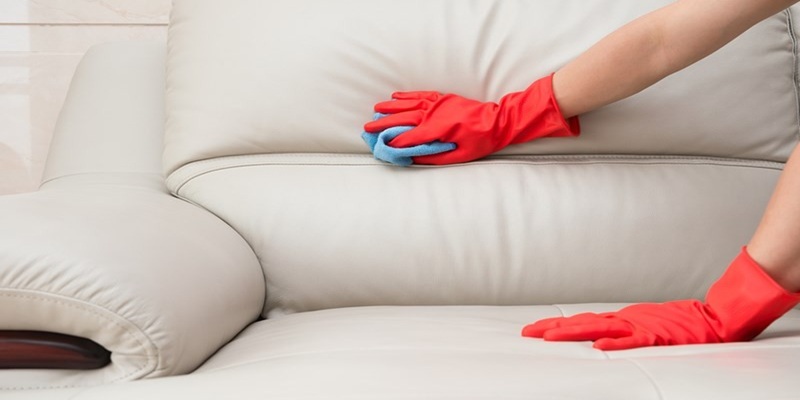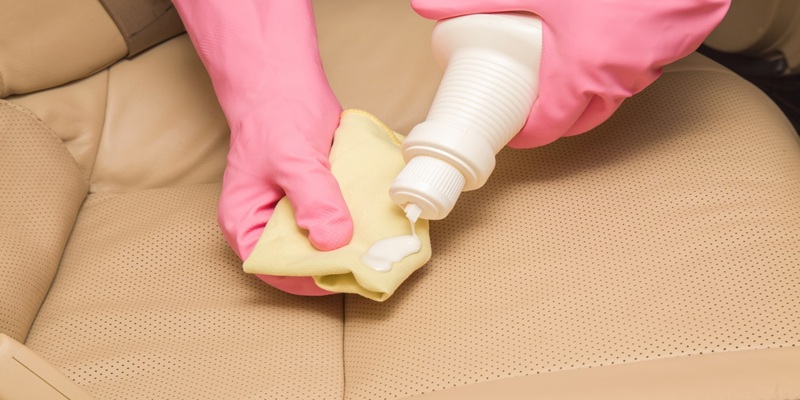How To Remove Ink Stains From Leather
Leather exudes elegance, but ink stains can quickly diminish its appeal. Knowing how to remove ink stains from leather is key to preserving its beauty. This guide covers effective methods, from household solutions to specialized products, ensuring your leather remains pristine and long-lasting. Say goodbye to stains and hello to flawless leather!
Leather exudes elegance, but ink stains can quickly diminish its appeal. Knowing how to remove ink stains from leather is key to preserving its beauty. This guide covers effective methods, from household solutions to specialized products, ensuring your leather remains pristine and long-lasting. Say goodbye to stains and hello to flawless leather!

Leather Types And Care Tips
Different leather types require specific care, especially when removing ink stains. Aniline leather is soft and natural but highly stain-prone, while suede and nubuck are absorbent and often need professional cleaning. Always test cleaners on a hidden spot to prevent damage, ensuring safe and effective stain removal tailored to your leather type.
Quick Action Steps To Tackle Ink Stains On Leather
When an ink stain occurs on leather, immediate action is critical to prevent permanent damage. Here are some quick steps to help you navigate the situation:
1. Gather Your Supplies: Before tackling the stain, collect the necessary materials: Soft cloths (preferably microfiber), Leather cleaner or conditioner, Rubbing alcohol, Cotton swabs or fine brushes
2. Blot the Stain: Quickly use a soft cloth to blot (instead of rubbing) the ink stain and absorb any excess ink, which helps limit the stain’s spread.
3. Test Your Cleaning Solution: Apply a small amount of rubbing alcohol to an inconspicuous leather area to ensure the cleaner won't harm the finish.
4. Apply Alcohol: If the test goes well, lightly dab a cotton swab in rubbing alcohol and gently apply it to the ink stain, working from the outside toward the centre to avoid spreading the ink.
5. Clean the Area: Once the stain begins to lift, use a clean cloth with leather cleaner on the affected area to remove residue and rejuvenate the leather.
6. Dry and Condition: Allow the leather to air dry and, once dry, apply a leather conditioner to restore moisture and prevent cracking.
Method 1: Rubbing Alcohol - Removing Ink Stains From Leather
Removing ink stains from leather can be daunting, but with the right tools and techniques, you can restore your leather items to their former glory. Rubbing alcohol is an effective method for tackling ink stains, and here’s a detailed step-by-step guide on how to use it safely.
Step 1: Prepare Your Materials
Before you start, gather the necessary materials: rubbing alcohol (isopropyl alcohol), a clean white cloth or paper towel, cotton swabs, and a soft leather conditioner. Ensure you are in a well-ventilated area to help dissipate any strong odours from the alcohol.
Step 2: Dab the Ink Stain
Begin by gently dabbing the ink stain with a clean white cloth. Use a light touch, as vigorous rubbing can spread the ink or damage the leather. The goal is to absorb as much ink as possible without pushing it deeper into the material.
Step 3: Apply Rubbing Alcohol with a Cotton Swab
Next, take a cotton swab and dip it into the rubbing alcohol. Carefully apply the alcohol to the stained area, using only a tiny amount. It's crucial to avoid soaking the leather, as excess moisture can lead to warping or discolouration.
Step 4: Blot, Don’t Rub
As you apply the rubbing alcohol, remember to blot the area with the cloth rather than rub it. Blotting allows for better ink absorption without damaging the leather's texture. Continue this process, switching to a clean section of the cloth as necessary.
Step 5: Monitor Progress
Periodically evaluate the stained area after each blot by checking if the ink is lifting and observing the colouration of the cloth. If the stain persists, repeat the application of rubbing alcohol and continue blotting until improvements are seen.
Precautions to Consider
Be cautious not to use too much rubbing alcohol, and always test the solution on a hidden area of the leather first to assess any potential adverse effects. Once the stain is removed, apply a leather conditioner to help replenish moisture and maintain the leather’s integrity.
Following these steps and considering appropriate precautions, you can effectively remove ink stains without damaging your leather items.

Method 2: Leather Cleaner
Utilizing a proper leather cleaner can yield highly effective results when dealing with ink stains on leather. Many commercial leather cleaners are designed to treat stains while conditioning the leather. Recommended products often contain gentle surfactants that lift ink without damaging the leather's finish. Reputable brands like Lexol, Bickmore, and Chamberlain's Leather Milk are recognized for their stain-removing capabilities and conditioning properties.
Cleaning Process:
Test the cleaner on a hidden area of your leather item to ensure it does not cause discolouration. After this, apply a small amount of the leather cleaner to a soft, lint-free cloth. Gently dab the stained area with the fabric, avoiding aggressive rubbing, as this can exacerbate the stain or damage the leather. Continue applying cleaner as needed until you observe the ink lifting. After the treatment, wipe the area with a damp cloth to remove any residue and allow it to air dry.
Pros and Cons:
One of the primary advantages of commercial leather cleaners is their specially formulated ingredients that can successfully tackle ink while moisturizing the leather. However, some products may contain harsh chemicals, such as alcohol or solvents, which can degrade the material. To avoid damage, sidestep cleaners containing these ingredients and instead opt for those with natural oils or waxes, which nourish the leather and help maintain its integrity.
Method 3: Cornstarch Or Talcum Powder
Cornstarch or talcum powder can be surprisingly effective for absorbing ink stains from leather due to their moisture-absorbing properties. Here’s how to utilize them effectively:
1. Preparation: Start by gently blotting the ink stain with a clean, dry cloth to remove excess ink. Avoid rubbing, as this could spread the stain further.
2. Application: Generously sprinkle cornstarch or talcum powder directly onto the stained area, completely covering the ink spot. Ensure the powder penetrates the leather surface to absorb the remaining ink.
3. Timing: Allow the powder to sit on the stain for at least 30 minutes. For deeper stains, extend this period to a few hours or even overnight. This duration enables the powder to absorb the ink as it dries.
4. Cleanup: After waiting, carefully brush off the cornstarch or talcum powder using a soft cloth or brush. If any residue remains, lightly dampen a cloth with water and wipe the area again (without soaking the leather).
Tips:
This method is most effective on fresh stains. Results may vary for old or set stains. Always test a small area first, as some powders could leave a residue or affect the leather's finish.
Additional Tips And Tricks
After cleaning, conditioning leather restores its natural oils, preventing dryness and cracks. Use a suitable conditioner, applying it in circular motions with a soft cloth to maintain its texture and longevity.
For maintenance, avoid placing ink items on leather and act quickly on stains by blotting, not rubbing. A leather protector spray helps prevent damage, and for stubborn stains, professional cleaning ensures safe treatment.
Protecting Your Leather For The Long Run
Effective ink stain removal from leather includes methods like rubbing alcohol, leather cleaner, and cornstarch or talcum powder, each suited to different leather types. Regular maintenance, such as conditioning and prompt stain removal, helps preserve the material and extend its lifespan. By implementing these essential care tips, you protect your investment and ensure that your leather products maintain their aesthetic appeal and integrity. Remember, a little attention goes a long way in preserving leather's durability and timeless elegance, enhancing its functionality and beauty for years.



